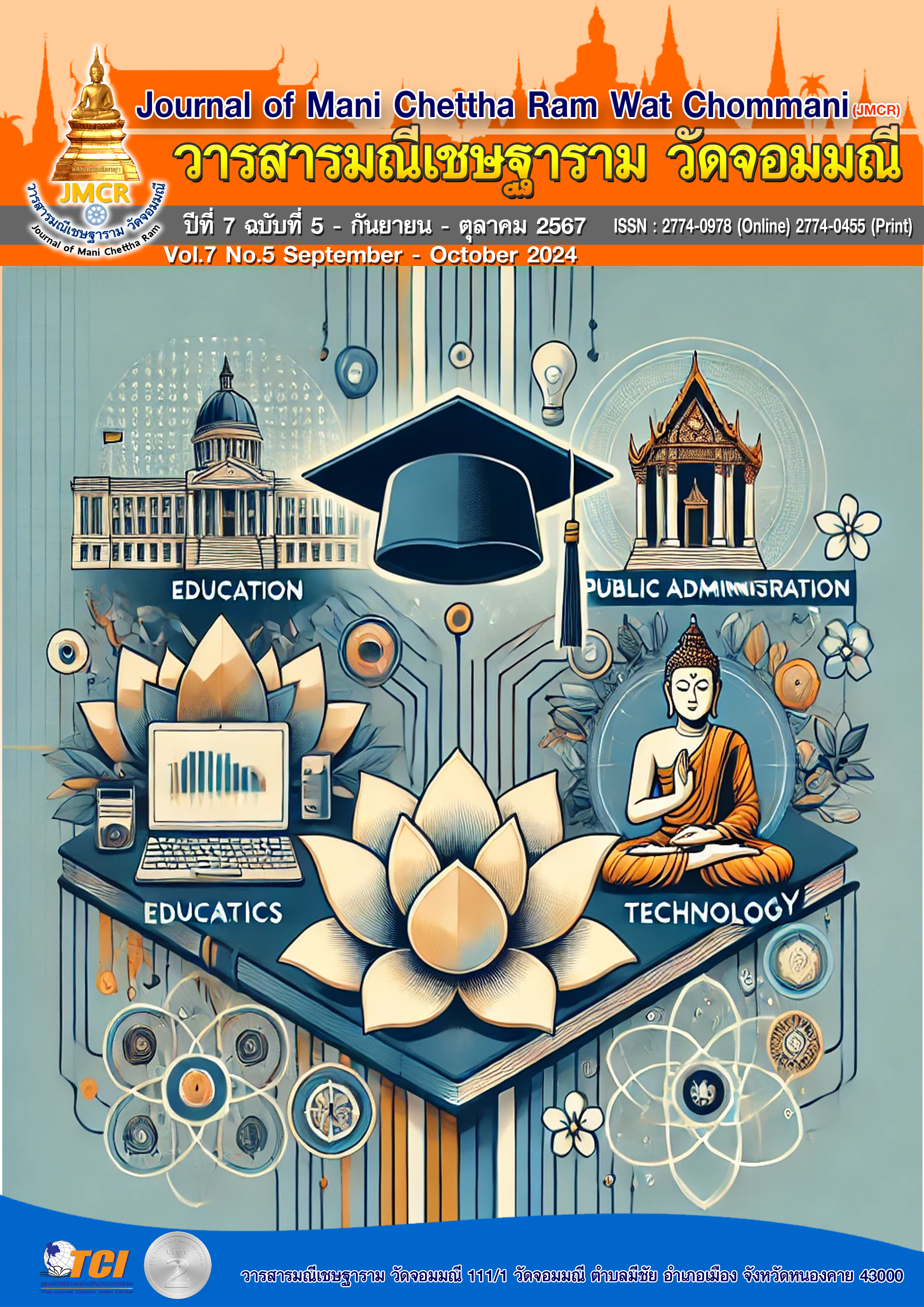AN APPLICATION OF THE IDDHIPADA FOR STUDENT LEARNING IN SAYABOULY BUDDHIST SECONDARY SCHOOL
Keywords:
หลักอิทธิบาท 4, การเรียนของนักเรียนAbstract
This research aimed to 1) study the application of the Four Bases of Iddhipada, 2) compare the application of the Four Bases of Iddhipada among students with different ages, grade points, and grade levels, and 3) study the recommendations on the application of the Four Bases of Iddhipada in the learning of students at Sampoom Songkla School, Chaiyaburi. The quantitative research used an interview form. The sample group consisted of 132 people. The key data from the interviews were 5 people/person. The instrument used was a questionnaire/interview form. The statistics used were frequency, percentage, mean, standard deviation, t-test, F-test, and Scheffe's method of analysis of differences. The qualitative data used theoretical content analysis.
The results of the study were found that:
- 1. The results of the analysis of the level of application of the four bases of influence in the learning of students at Chaiyaburi Samphanthawong School were at a high level overall ( = 3.84). When considering each aspect, it was found that the aspect of chanda had the highest mean ( = 3.89), followed by the aspect of viriya and citta ( = 3.83), while the aspect of vimangsa had the lowest mean ( = 3.81).
- 2. The results of the comparison of the level of application of the four powers in the learning of students with different ages, grade levels and grade averages found that the age and grade levels were different overall at a level of .001 and the students with different grade averages were different overall at a level of .05.
- Suggestions regarding the application of the four powers in students' learning found that teachers should plan the teaching and learning to be up-to-date in order to create interest and satisfaction for students. They should encourage students to not be discouraged by any obstacles and encourage students to analyze the causes of learning problems. Teachers should consider and follow the curriculum and bring in new innovations to help in teaching and learning.
References
ณิรดา เวชญาลักษณ์. (2561). หลักการจัดการเรียนรู้. กรุงเทพมหานคร: โรงพิมพ์แห่งจุฬาลงกรณ์มหาวิทยาลัย.
ปิ่น มุทุกันต์. (2539). ปฏิบัติตามธรรมะประสบความสำเร็จ. กรุงเทพมหานคร: มงคลสาร
พระเจริญ บุญทศ,ดร. และ ดร.ลัดดาวัลย์ คงทอง. (2563). การประยุกต์ใช้หลักอิทธิบาท 4 ในการเรียนรู้รายวิชาพระพุทธศาสนาของนักเรียน โรงเรียนมหาวชิราลงกรณราชวิทยาลัย จังหวัดพระนครศรีอยุธยา สังกัดงาน กลุ่มโรงเรียนพระปริยัติธรรม แผนกสามัญศึกษา เขตกลุ่ม 3. มหาวิทยาลัยมหามกุฏราชวิทยาลัย วิทยาเขตมหาวชิราลงกรณราชวิทยาลัย.
พระจักร จกฺกวโร (เหมือนปน). (2564). การจัดการเรียนรูตามหลักอิทธิบาท 4 กลุมสาระการเรียนรูสังคมศึกษาศาสนา และวัฒนธรรม ระดับมัธยมศึกษาตอนปลาย สังกัดสำนักงาน เขตพื้นที่การศึกษามัธยมศึกษา เขต 25. ใน ปริญญาพุทธศาสตรมหาบัณฑิต สาขาวิชาการสอนสังคมศึกษา. มหาวิทยาลัยมหาจุฬาลงกรณราชวิทยาลัย.
มหามกุฎราชวิทยาลัย. (2525 ค). พระสูตรและอรรถกถาแปล อังคุตรนิกาย ปัญจกนิบาต เล่มที่ 2 ภาคที่ 2. กรุงเทพมหานคร: โรงพิมพ์มหามกุฎราชวิทยาลัย.
ล้วน สายยศ และอังคณา สายยศ. (2540). เทคนิคการวิจัยทางการศึกษา. กรุงเทพมหานคร: สุวีริยาสาส์น.
วรทัศน์ หวังวรวุฒิสกุล. (2565). การปลูกฝังคุณธรรมตามหลักอิทธิบาทสี่ของผู้บริหารที่ส่งผลต่อสมรรถนะ สำคัญของผู้เรียน โรงเรียนกลุ่มรัตนโกสินทร์สังกัดสำนักงานเขตพื้นที่ การศึกษาประถมศึกษา กรุงเทพมหานคร. วารสารชัยภูมิปริทรรศน์, 5(3).
ส่งศรี ชมพูวงศ์. (2559). ระเบียบวิธีวิจัยทางสังคมศาสตร์. นครศรีธรรมราช: สำนักพิมพ์มหาวิทยาลัยมหามกุฏราชวิทยาลัย.



